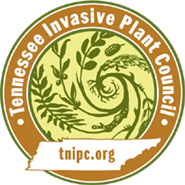Phalaris canariensis L.
Annual Canary Grass

Description
Stem
Canary Grass is an annual grass 2 to 6.5 feet tall with a round, hairless stem. It lacks a strong, rhizomatous root system.
Leaves
Leaves are arranged alternate, 3.5 to 10 inches long tapering gradually, and 0.25 to 0.75 inches wide. The leaves are coarsely textured and bluish green in color. Leaves have a ligule (papery sheath at the base of leaf) present. It is 0.25 inches long and round round at apex.
Flowers
Flowers are oval in shape, 0.5 to 1.5 inches long, green or purplish in color, turning tan as seed matures. It blooms July-August.
Fruit
Fruit is shiny, yellow to brown at maturity.
Images
Photo: Joseph M. DiTomaso, University of California - Davis, Bugwood.org
More images of Phalaris canariensisLife History
Habitat
Annual Canary Grass prefers meadows, cultivated soils, and roadsides. It also prefers dry ground.
Origin and Distribution
Native range is much of Europe around the Mediterranean region. Current distribution - USA (AK, AL, AR, AZ, CA, CO, CT, DC, DE, FL, GA, HI, IA, ID, IL, IN, KS, KY, LA, MA, MD, ME, MI, MN, MO, MS, MT, NC, ND, NE, NH, NJ, NM, NY, OH, OK, OR, PA, RI, SC, SD, TN, TX, UT, VA, VT, WA, WI, WV, WY), CAN (AB, BC, MB, NB, NF, NS, NT, ON, PE, QC, SK, YT)
Management Recommendations
Mechanical Control
Seedlings and small sprouts can be hand-picked or dug out, though this soil disturbance can also create sites for further invasion. Cuttings must be disposed of properly (burned or composted) to ensure seeds don’t sprout into new plants. Alternately, infested areas can be fenced and browsed by goats for 3 to 4 years to attain acceptable control as part of an integrated pest management program.
Herbicidal Control
To remove established plants, a foliar treatment application using a general use herbicide such as glyphosate can be applied.

